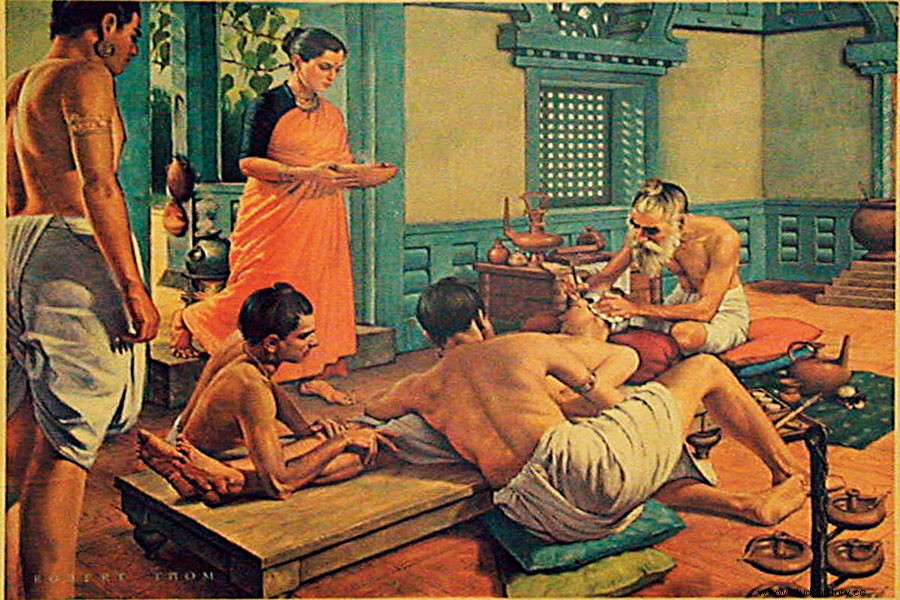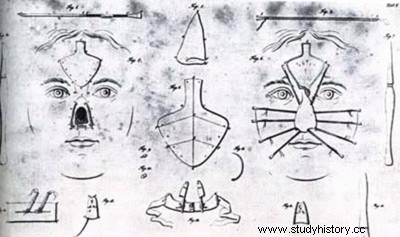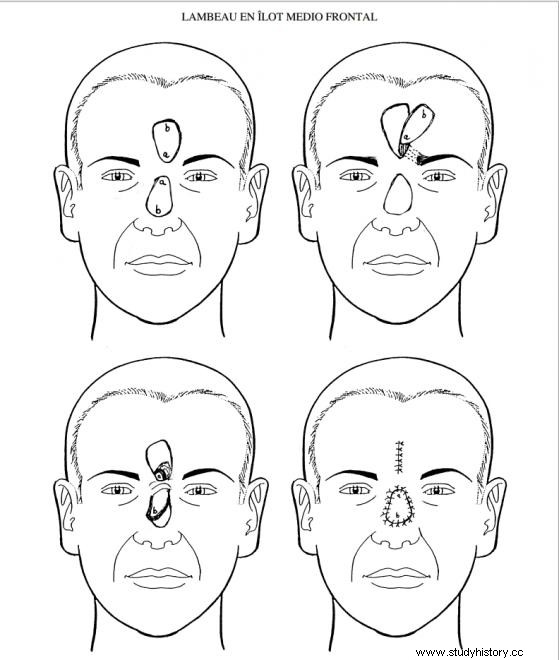Sushruta Samhita is a treatise on traditional medicine from India written in Sanskrit and attributed to Sushruta , a Hindu physician from the 6th century BC. to whom he is considered the Father of Indian Medicine. This treatise, along with the Charaka Samhita and the Astanga Hridaya, constitutes the Great Trilogy of Ayurvedic Medicine. This trilogy describes surgical procedures, diagnostic techniques, and treatments for various diseases and injuries. Sushruta standardized different techniques, specific procedures... and invented the practice of plastic surgery and facial reconstructions.

His specialty was rhinoplasty, the reconstruction of the nose, and not because he had a special devotion to this appendage but because of the "custom" they had in India of amputating the nose as a form of punishment. Convicted criminals and women accused of adultery had their noses cut off to mark them and had to live with this stigma for the rest of their lives. So, for those who had suffered this punishment, that intervention offered them an opportunity to regain their dignity and lead a normal life again. And the most curious thing is that this reconstruction is still practiced today with the same method described in Sushruta Samhita.

This technique consists of cutting an inverted isosceles triangle into the skin of the forehead—the base at the top of the forehead and the apex near the nose itself—that will serve to reconstruct the missing nose. The piece of skin of the triangle was released except for the part of the vertex. The flap was turned on the vertex so that the epidermis remained on the outside and the edges were sewn to the face, giving shape to the new nose. The only inconvenience of this operation was the scar that remained on the forehead, although nothing that could not be remedied with some heroic story or pulling the turban up to the eyebrows.

Other reconstructions are also described, such as the lip or the ears (same method as rhinoplasty but using the skin of the cheek), different types of bandages depending on the part of the body, wine as an anesthetic, ants as suture material — They put both sides of the wound together and the ants are placed on it, when they bite with their jaws, the body is ripped off and the wound is clamped and sutured—, the use of leeches... all that was missing was the breast implant and the Botox.
And there is more, Sushruta also details the cataract operation. Using a curved needle, called Jabamukhi Salaka , the cataract (opacity of the lens) was extracted and the eye in question was bandaged with cloths soaked in hot butter.
As the good doctor that he was, he warned that surgery should be the last resort. Sushruta also devoted himself to teaching in the city of Varanasi —in northern India—. His students had to train for six years, and after this learning period they had to take a solemn oath, a century before the Greek physician Hippocrates was born.
